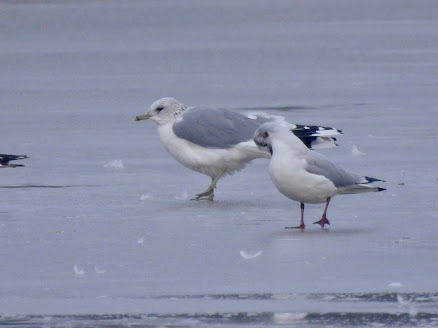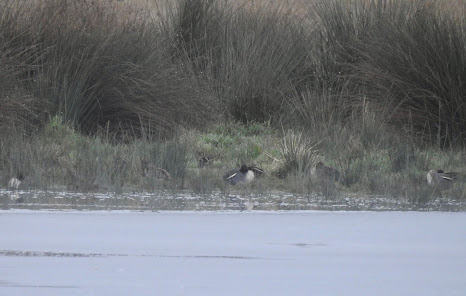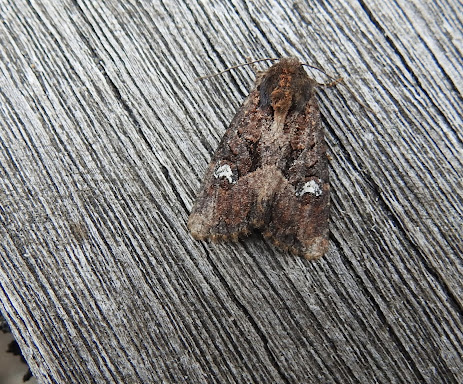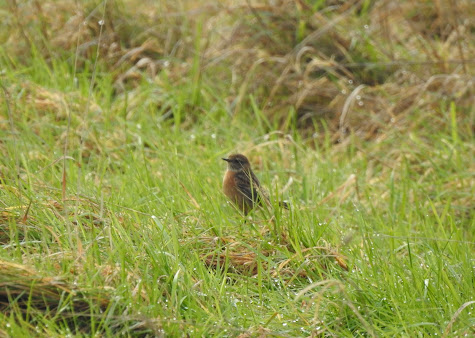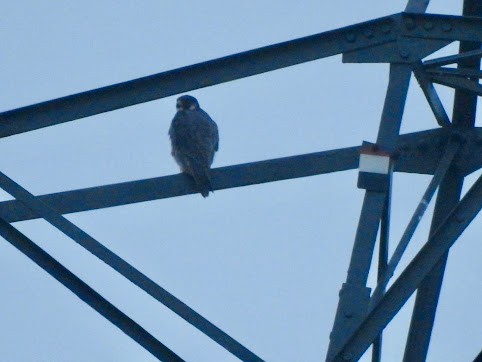My recent walk to Morton Bagot has had an unfortunate consequence. My foot issue has re-emerged and I have been hobbling around the house ever since. Fortunately this has coincided with the annual RSPB Big Garden Birdwatch.
On reminding myself of the rules I discovered they are very straightforward, maybe too straightforward. All the RSPB website says is that you should record birds from your window/in your garden for one hour over the weekend of Jan 29 - 31. It adds that you should not count birds that are flying over, and that you should only include the birds seen at any one time during your hour. I took this to mean that if, for example you see a male Blackcap which then disappears, and ten minutes later you see a female Blackcap, you can only count it as one Blackcap, unless the two then reappear together.
This is described as citizen science. It is scientific because there are rules, but it involves citizens who don't necessarily follow them.
A quick Google search reveals participants who say things like "I didn't realise you couldn't count birds that fly over" and "well if I see an obvious male and later an obvious female, that's two birds as far as I'm concerned".
Having read the instructions, I only had to decide when to do my hour. Saturday was going to be very wet, while Sunday held the prospect of snow. Sunday then.
At around lunchtime on Saturday the rain had turned to snow, and the garden held a swarm of Goldfinches, at least 20. Two Collared Doves huddled for warmth in the apple tree, while four Chaffinches hopped around the lawn. I was very tempted to start my hour there and then.
 |
| A pair of shivering Collared Doves |
In the end I decided to stick to Plan A, which meant throwing in my lot with Sunday.
So this morning I waited until 09.00 and settled down to count what turned up in the clear, slightly frosty, and definitely not snowy, conditions. I soon found myself tempted to cheat...a bit.
Counting the number of birds present at any one time is a bit like (I imagine) spinning plates on poles. Your House Sparrow count reaches five, then you scan to the right and spot another, but scan back left and there are only four left. Have you seen five, or six? I should settle for five, drat them. This kind of thing happens constantly throughout your hour.
Lesser Black-backed Gulls and Redwings fly over. I can't count them. Then a Woodpigeon flies in and almost lands but keeps going. Surely I can count him? Fortunately he returned later and started walking around, so my scruples were not tested.
One question not really addressed in the rules is what counts as your garden. I have always included my next-door neighbour's dead peach tree, which very nearly overhangs our garden, and less convincingly the roof of the house just beyond the garden fence. But I don't count the big Silver Maple which dominates our end of the close. It would probably flatten our shed if it ever blew over, but I still won't accept it as a legitimate part of the survey.
At the end of my hour I had recorded 12 species for the list, all of them definitely in the garden. I had seen a female Blackcap, the first since December, but I hadn't seen a Great Tit. Annoying, particularly as 15 minutes later one appears on the fat-balls.
In fact, an hour later I am thinking of doing an alternative hour. Can I ditch my first hour as substandard and try again? Is that in the rules? It doesn't say, so I have another go.
Two Great Tits are regularly present and I see more Goldfinches, then a Wren appears. But no Blackcap this time, no Magpie reaches us, no Dunnocks, no Starling, and I end up with fewer than the first attempt. Unless I count the birds in the Silver Maple. It hosted a Redwing, and better still a female Great Spotted Woodpecker.
In the end I decide that doing an alternative hour is not in the spirit of the survey, and settle for my first attempt.
My full list in order of appearance is thus:
